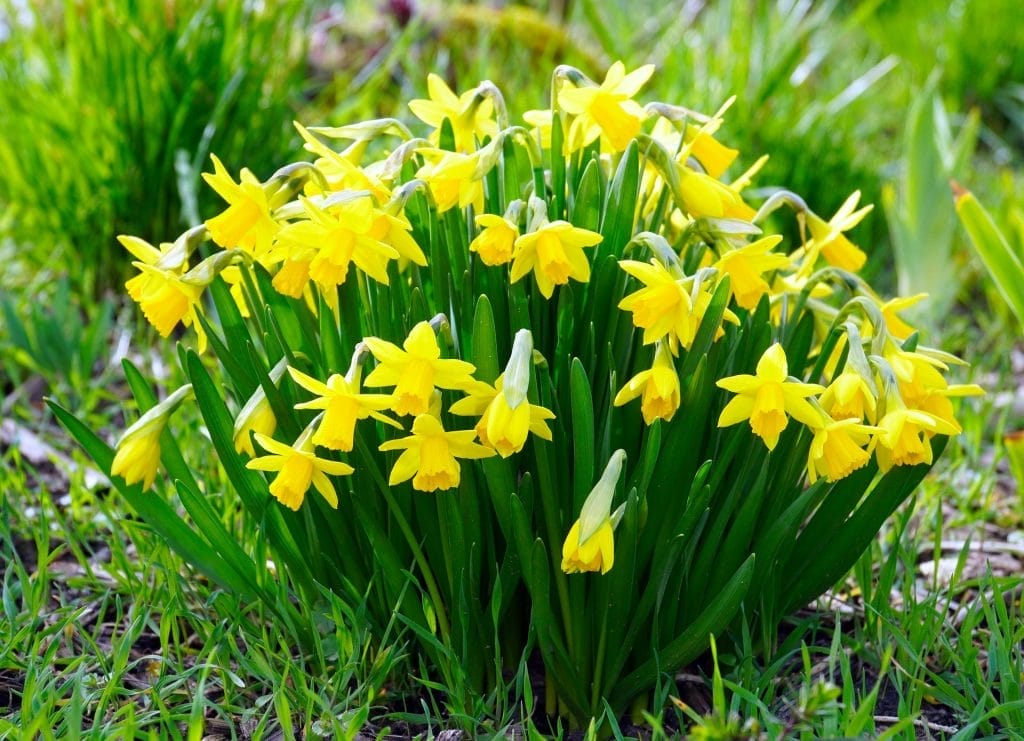What to Do After Your Daffodils Bloom
You’ve likely heard the saying, ‘April showers bring May flowers,’ but what happens when the vibrant petals of your daffodils begin to fade? As you stand admiring the last of their bloom, it’s important to think about the next steps: deadheading the spent flowers is your first task to prevent them from sapping needed energy from the bulbs. Yet, the foliage must remain, gathering sunlight and nourishing the bulbs for next year’s show. How you manage these next few weeks could be the difference between a disappointing display and a flourishing garden next spring. What could be the best strategies to make sure your daffodils thrive? Let’s explore.
After-Bloom Care for Daffodils
Once your daffodils have finished blooming, it’s important to remove the spent flowers by snapping off the decaying heads to prevent seed production. This step redirects the plant’s energy from seed creation to essential bulb strengthening.
You’ll want to allow the leaves to remain intact, as they continue to photosynthesize and gather nutrients necessary for next season’s growth. Resisting the urge to tidy up by cutting back the foliage prematurely is critical; these green leaves are the lifeline for your daffodils, storing up much-needed resources in the bulbs below.
If the foliage looks unsightly, consider interplanting with annuals to disguise the yellowing leaves, maintaining both aesthetics and the health of your daffodils.
Care for Potted Daffodils
After caring for your garden-planted daffodils, it’s important to focus on the specific needs of potted daffodils. Once the blooms fade, you’ll need to remove these spent flowers to prevent seed formation, which diverts energy from the bulb. Let the foliage continue to grow; it’s essential for photosynthesis, enabling the bulbs to store energy for next season’s blooms. Gently incorporate compost around the edges of your pot to enrich the soil without disturbing the bulbs.
Make sure the soil remains dry during the dormant period post leaf dieback. If you’re in a colder zone, consider moving your potted daffodils indoors or to a frost-free area to protect them from extreme winter temperatures. This careful attention ensures they’ll return vibrantly.
Dealing With Blind Daffodils

If your daffodils aren’t blooming, they might be ‘blind,’ which often results from overcrowded bulbs or insufficient nutrients. Here’s what you can do.
First, consider dividing the bulbs. You should do this every 3-4 years to prevent them from becoming too crowded. This guarantees each has enough space and resources to thrive.
Next, assess their nutrient intake. Daffodils benefit greatly from phosphorous-rich fertilizer, especially if you’ve cut the leaves early in previous seasons. Apply this soon after the blooming period to promote future growth.
Further Information on Daffodils
To deepen your understanding of daffodil care, consider exploring these nine essential facts, available through our extensive resources. You’ll discover the best soil pH for daffodils and how slight variations can impact their bloom vitality.
You’ll also learn about the historical use of daffodils in traditional medicines, enhancing your appreciation for these versatile flowers. Additionally, understanding the genetic diversity among daffodil species can help you select varieties best suited to your climate and soil type.
Furthermore, you’ll find guidance on preventing common pests and diseases that can affect daffodils, ensuring your blooms remain vibrant and healthy. Subscribe to our newsletter for updates on the latest research and advanced techniques in daffodil care, tailored for enthusiasts like you who seek mastery.
Homesteading Essentials
While nurturing daffodils provides joy and beauty, embracing homesteading can greatly enhance your self-sufficiency and connection to nature. You’ll master skills that not only reduce your reliance on external sources but also deepen your appreciation for every season’s offerings.
Start by learning to preserve your harvest. Canning, drying, and fermenting fruits and vegetables can transform your pantry into a year-round food supply. Don’t overlook the importance of sustainable gardening techniques that improve soil fertility and reduce pests without harsh chemicals.
Conclusion
To sum up, tending to your daffodils post-bloom is like safeguarding a treasure trove of golden blooms for the upcoming spring. Trim off those spent flowers, let the greenery soak up the sun a little longer, and perhaps sprinkle in some delightful annuals for a seamless garden display.
Remember, those potted beauties require a cozy, frost-free corner come winter. With these tips, you’ll guarantee your daffodils aren’t just surviving but thriving, prepared to impress again next season.







